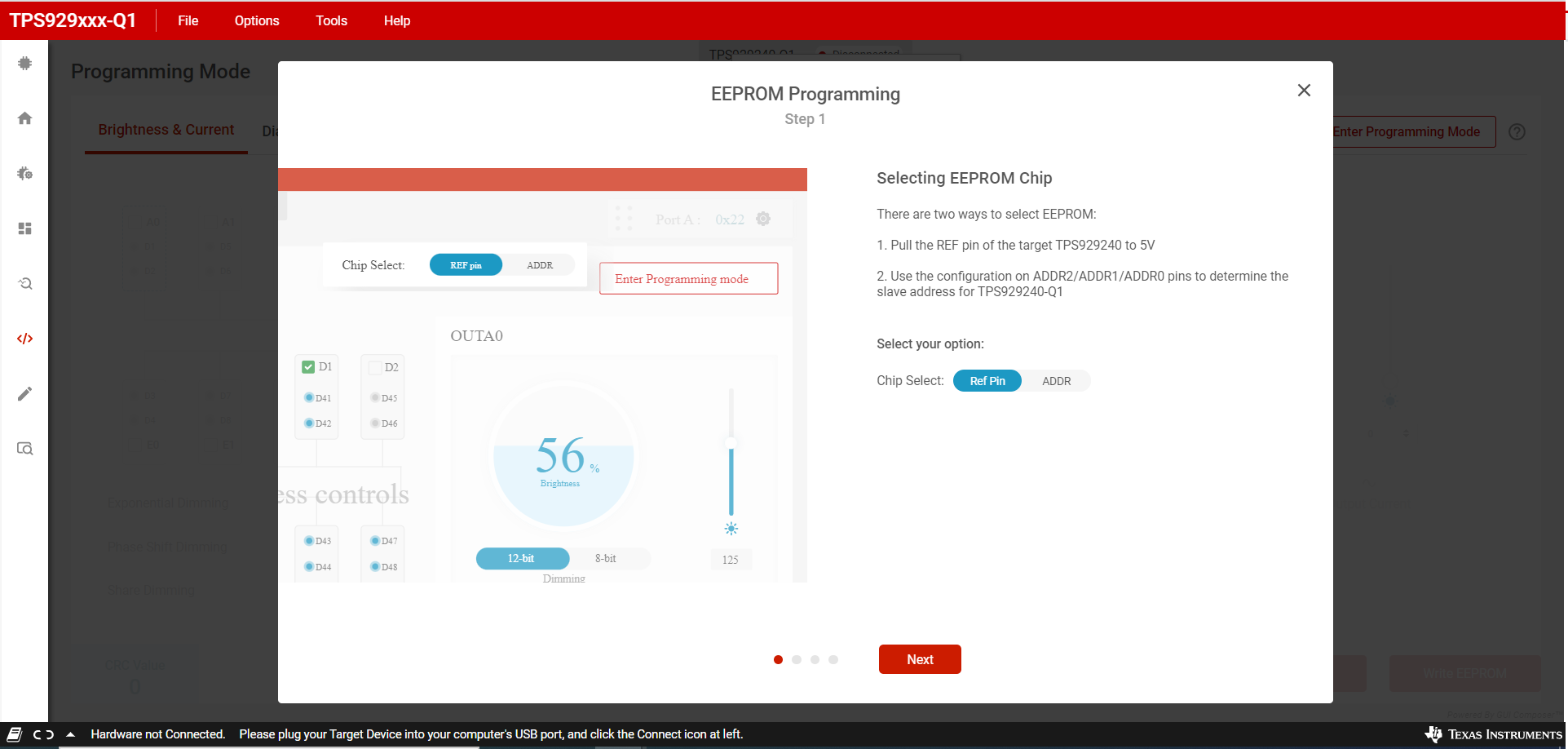SLVUCJ0 December 2022
3.4.4 EEPROM Programming Page
The device supports two programming modes for different applications: either with chip select or external address select. Figure 3-14 shows the EEPROM programming page. Click "Enter Programming Mode" to enter the EEPROM mode and change the corresponding register value. "Read EEPROM" is used to get the value from the TPS929160EVM. After changing the value, click "Write EEPROM" button. Then the all the current configuration value really overwrites the corresponding EEPROM registers.
Jumping to other pages from the programming page or clicking "Exit PROG mode" button automatically forces the device exit EEPROM programming mode through clearing CONF_STAYINEEP method, which means the newly modified EEPROM registers value do not update to corresponding configuration registers after exiting EEPROM programming mode. CLR_REG can be set through register map page to update configuration registers with the latest EEPROM registers value immediately. For other detailed operation instructions, see the walkthrough wizard of this page.
 Figure 3-14 TPS929160EVM GUI EEPROM Page
Figure 3-14 TPS929160EVM GUI EEPROM Page